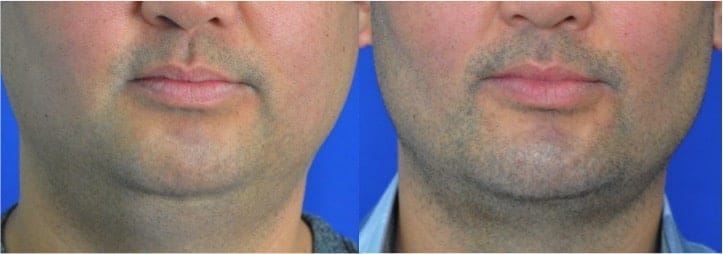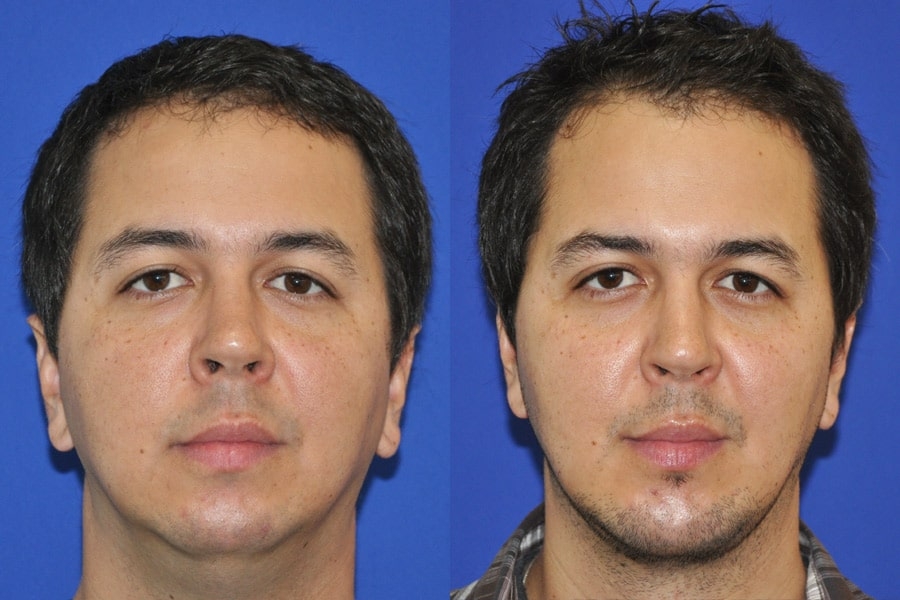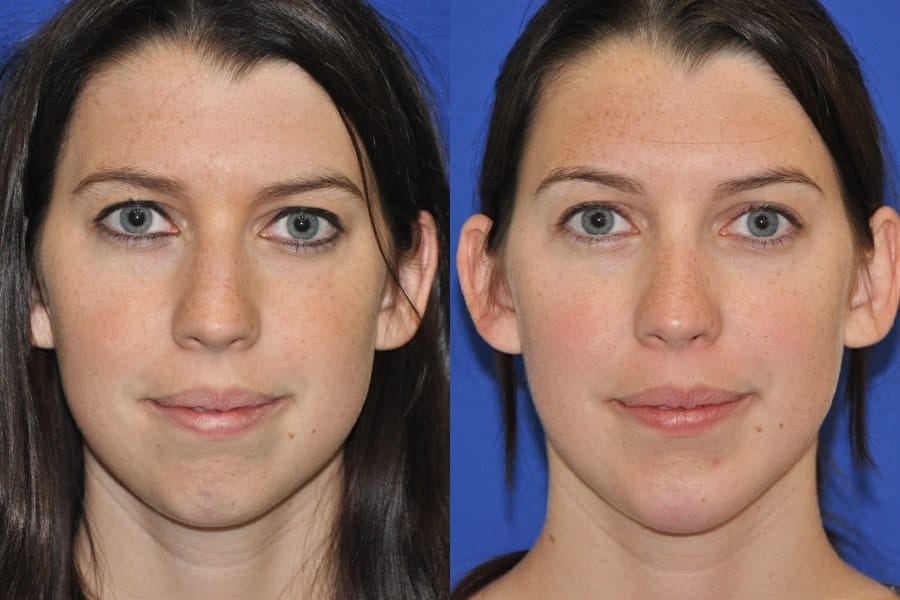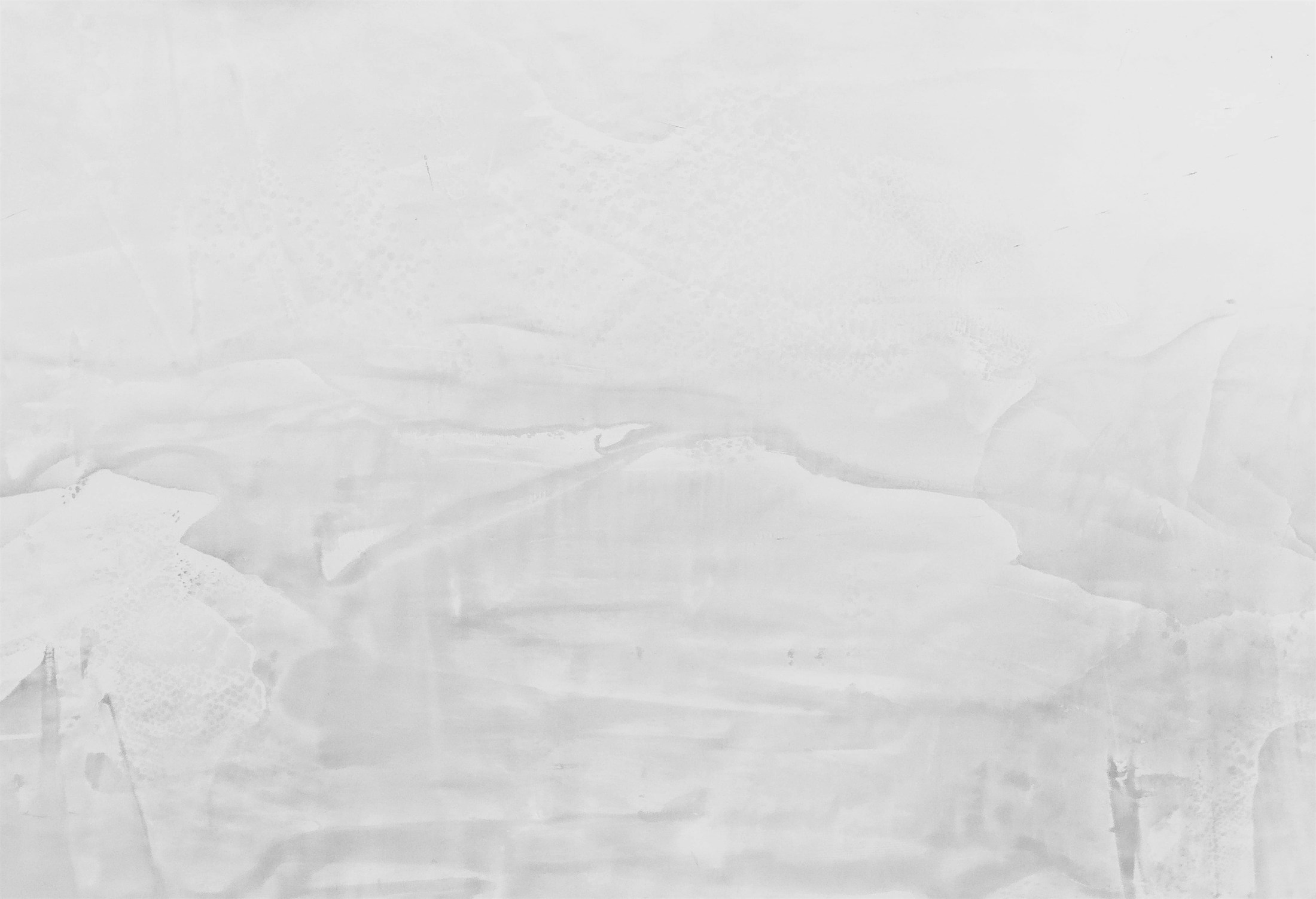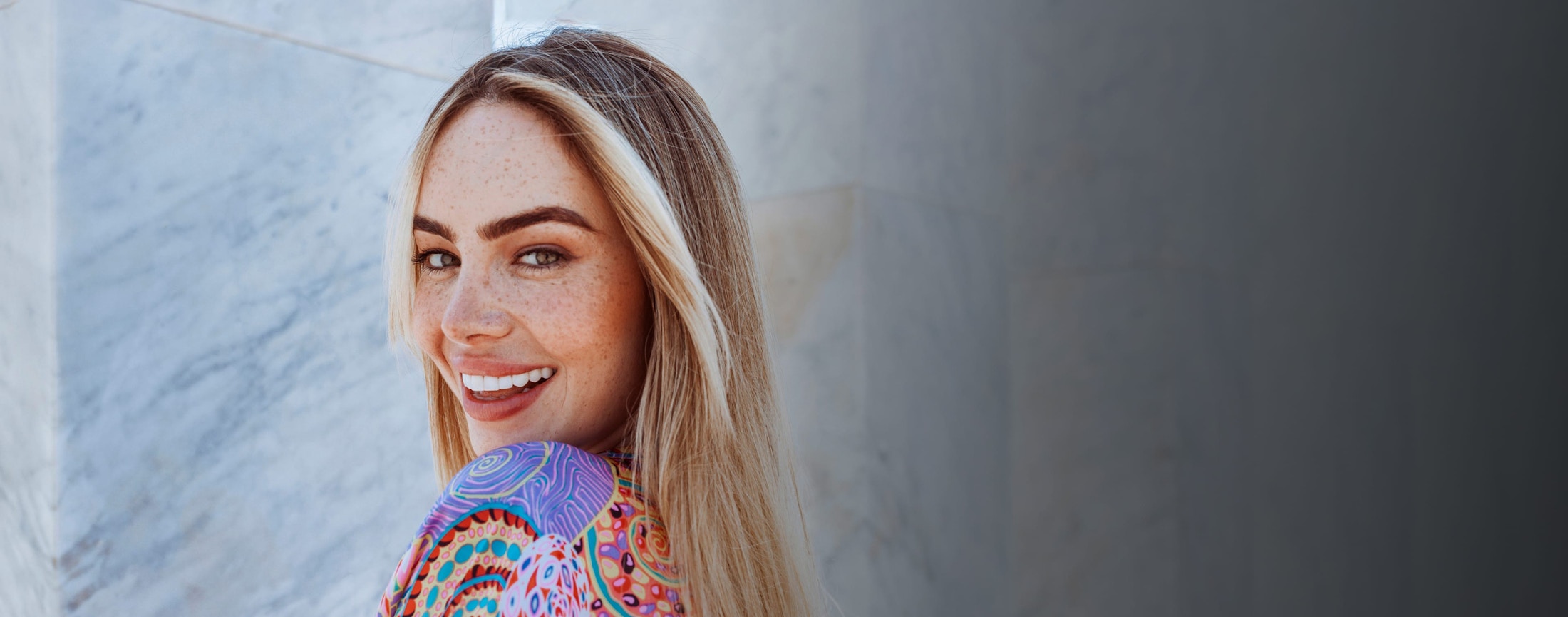Your Chin Implant Surgery
If you’re having chin implant surgery done as a standalone procedure or with neck liposuction or buccal fat removal, Dr. Mehta can use light intravenous (IV) twilight sedation. If you’re combining your chin augmentation with rhinoplasty, you’ll require deeper anesthesia.
If liposuction is needed before placing the implant, Dr. Mehta will perform that first. Once excess fat has been removed, he will make a small incision underneath your chin and create a pocket along the front of the jawbone, underneath the muscle layer.
He’ll place your chin implant through that opening, taking care to avoid crucial nerves and muscles in the area. He will then stitch the implant in place to ensure that it’s positioned securely before closing the incision in layers with dissolvable sutures.


